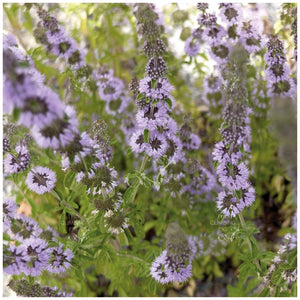Your Cart is Empty


SP.ED.MENENGP-0100
Mentha English Pennyroyal Seeds
Inc. GST + FREE Shipping
$6.09
Mentha English Pennyroyal is a perennial herb variety grown in historical times for a great number of uses including a range of folk remedies such as flavouring wine and puddings with the distinct spearmint-like aroma. In its most practical application, this variety is effective as a natural insect repellent when planted near outdoor entertainment areas, as it has been found to keep mosquitoes, flies, midges and other annoying insects away. Mentha English Pennyroyal oil is also used in aromatherapy, however given its toxicity if it is ingested, this is not recommended. These properties of Mentha English Pennyroyal are believed to be a result of pulegone, a natural compound found in the plant. (Source: Wikipedia). The Climbing Fig does not advise the consumption and/or harvesting of any parts of the Mentha English Pennyroyal seeds or plant. In a more conventional use, Mentha English Pennyroyal is useful in broad range of landscaping applications including as a border, hedge or feature plant, as the mint like foliage contrasts beautifully against the much brighter mauve flowers. Mentha English Pennyroyal is very hardy and usually quite drought tolerant plant, once established.
Advantages of Mentha English Pennyroyal
- Natural insect-repellant for the outdoors
- Strong spearmint like fragrance
- Suitable as cottage garden shrub
Features
- 40 - 50cm height at maturity
- Plant near herb garden, allowing at least 50cm space
- Prefers full sun but will grow in part shade
- Suitable for pots and will grow in most regions of Australia
- Easy to grow perennial garden herb (not suitable for consumption)
Seed Sowing Instructions
- Easy to follow seed propagation notes are provided with every seed purchase
- Seeds of this variety are best started in seed raising mix or Jiffy® pellets before planting into the garden
What am I Purchasing?
- Premium seeds of Mentha English Pennyroyal
- Easy to follow seed propagation notes










